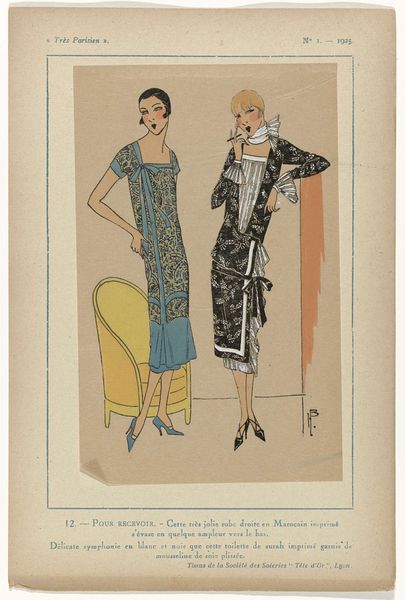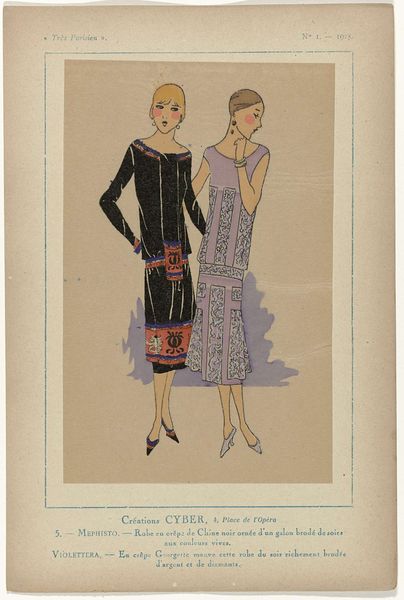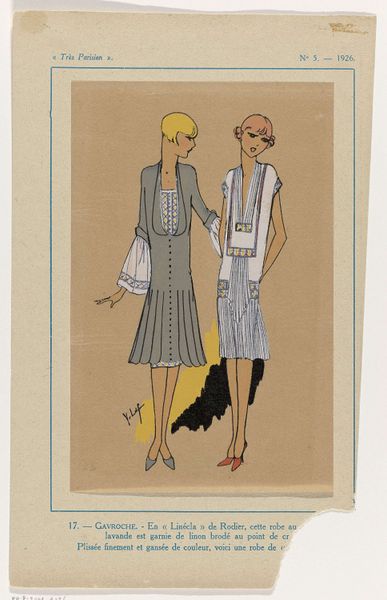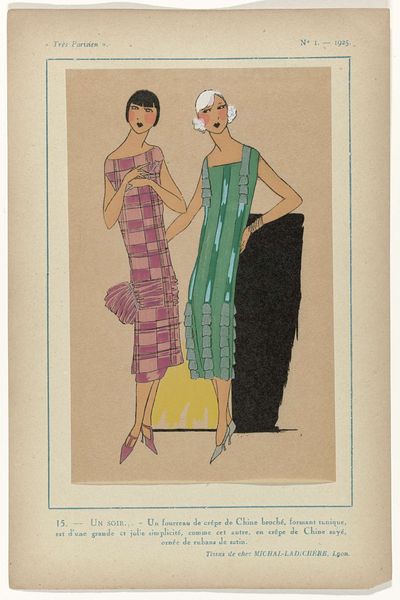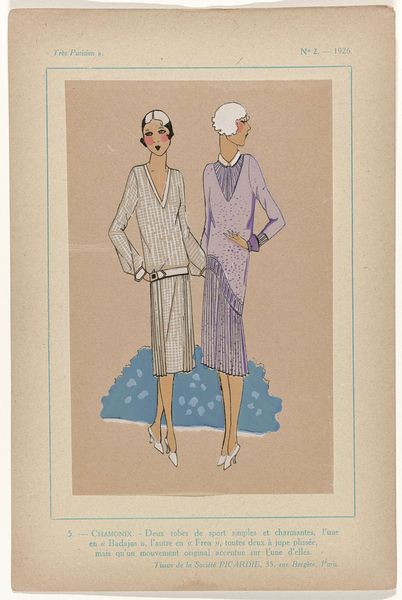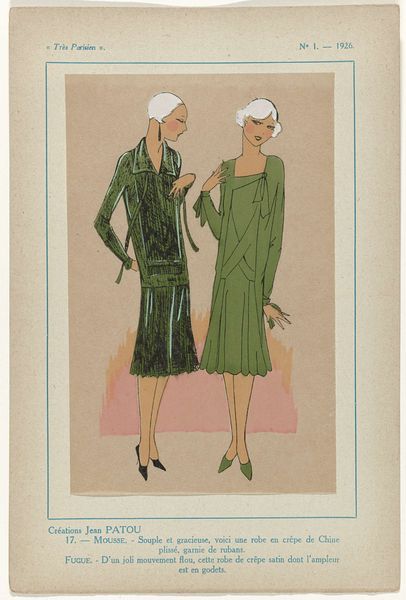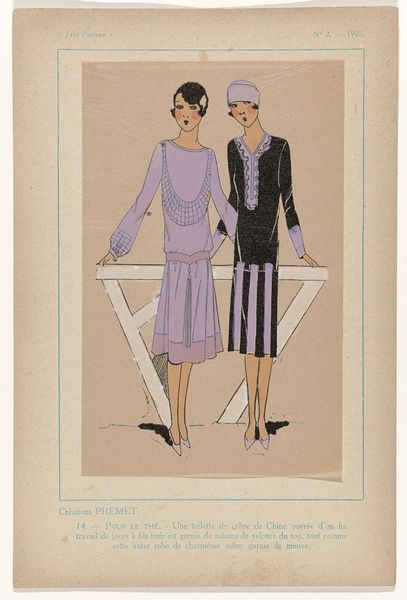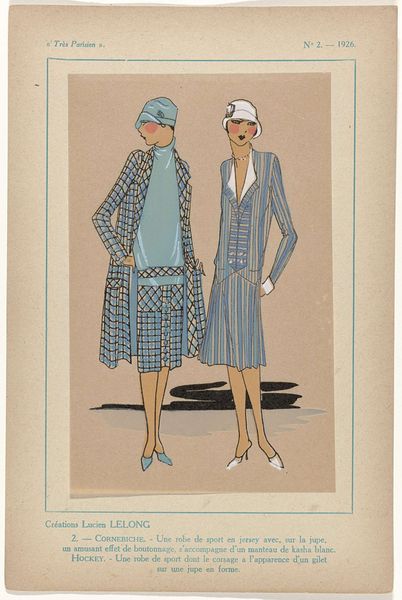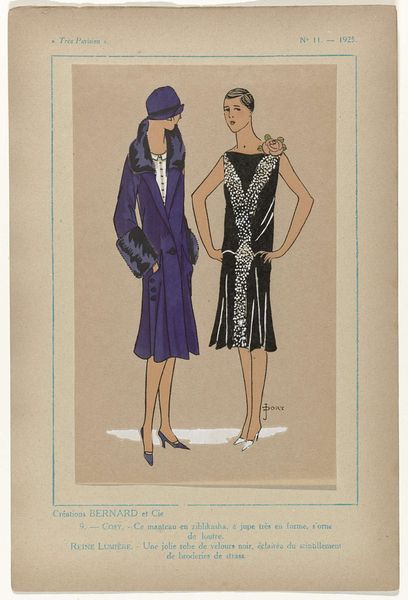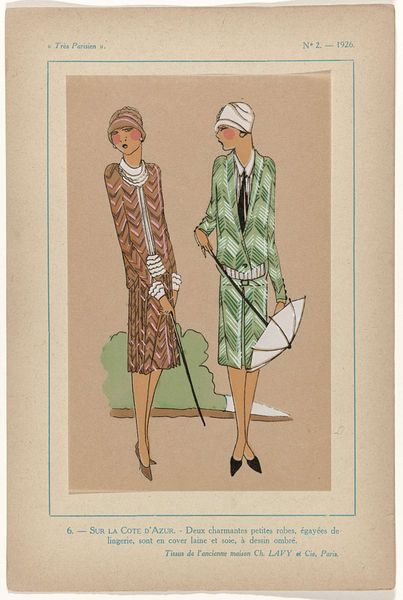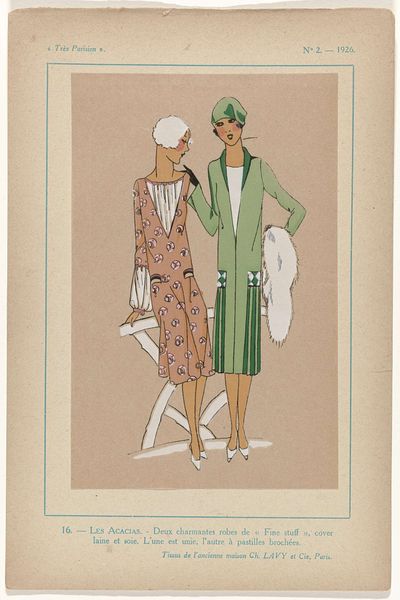
Très Parisien, 1926, No. 2, Pl. 15: Créations MARTIAL ET ARMAND - JOLI COEUR 1926
0:00
0:00
watercolor
#
portrait
#
art-deco
#
muted colour palette
#
watercolor
#
historical fashion
#
watercolour illustration
Dimensions: height 195 mm, width 120 mm, mm
Copyright: Rijks Museum: Open Domain
Editor: This is a watercolor illustration from 1926 titled "Très Parisien, No. 2, Pl. 15: Créations MARTIAL ET ARMAND - JOLI COEUR," by G-P. Joumard. It depicts two women in art deco dresses. The muted colors give it a sense of elegant restraint. What catches your eye? Curator: I'm drawn to the way the artist utilizes archetypes of femininity in the flapper era. The clothing, especially, tells a story of liberation and modernity. The bobbed hair, the loosened silhouettes of the dresses… they're all symbols of a woman breaking free from Victorian constraints. What do you make of their gazes? Editor: They both seem very self-assured and nonchalant. Are their poses also symbolic? Curator: Precisely. Notice the angles, the slightly aloof expressions. These are coded gestures representing the "New Woman." She's independent, educated, and sexually liberated. Think of the artist inserting these fashionable figures into the visual memory of Parisian style, creating lasting ideals. What emotional connection do you feel from these fashion statements? Editor: I guess the dresses are more than just pretty clothes. They are charged with historical significance of modernity and change, representing female empowerment. I’ll never look at flapper dresses the same way again! Curator: It's fascinating how a seemingly simple fashion illustration can carry such complex layers of cultural meaning, isn't it? A single piece really highlights so many complex changes in society through sartorial codes!
Comments
No comments
Be the first to comment and join the conversation on the ultimate creative platform.

